Architizer is thrilled to reveal the 12th Annual A+Awards Finalists. See which projects and firms made the cut and have your say in who wins a coveted Popular Choice A+Award. Cast your vote today >
Drawings both record ideas and generate design in their own right. While most architectural drawings involve man-made elements that are organized and assembled, architects also include a range of other features that can tell a story of movement and atmosphere. While vegetation and plants are usually reserved for landscape architecture and building exteriors, they can also be implemented in architectural floor plans, sections and more. The best of these drawings give a sense of the power of biophilia by showing how integrated plantings and furnishings establish the feel of space.
Taking a closer look at the plant and the pen, the following drawings include a range of natural elements and plants that are incorporated into each drawing. Together, this collection represents a range of programs and scales that vary across geographic regions. As such, some are more insular in nature, while others draw occupants and their gaze toward the outdoors. As a whole, they showcase diverse ways to think about architectural drawings and how to make the most of organic design features.
Naman Retreat Pure Spa
By MIA Design Studio, Da Nang, Vietnam
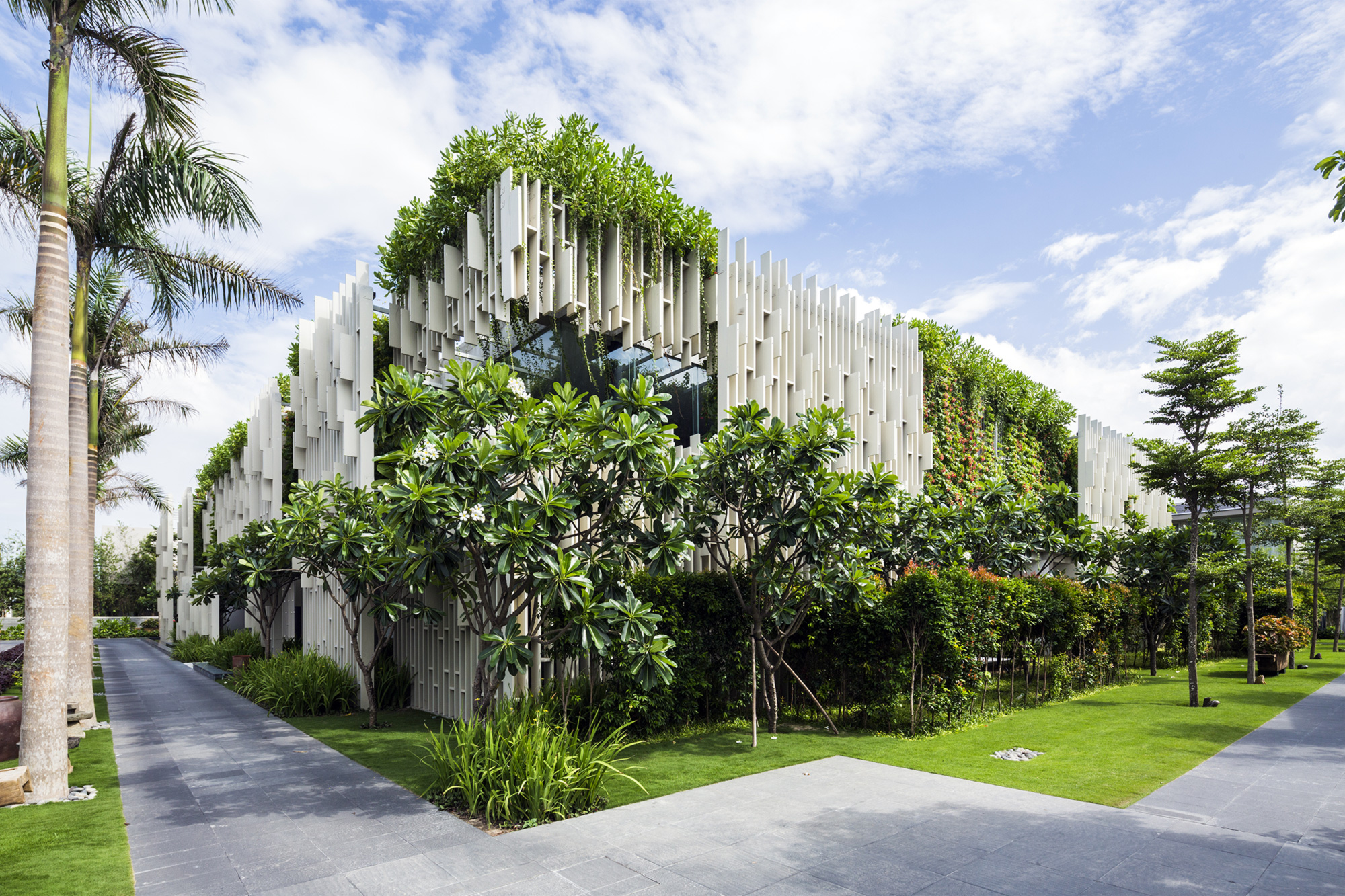
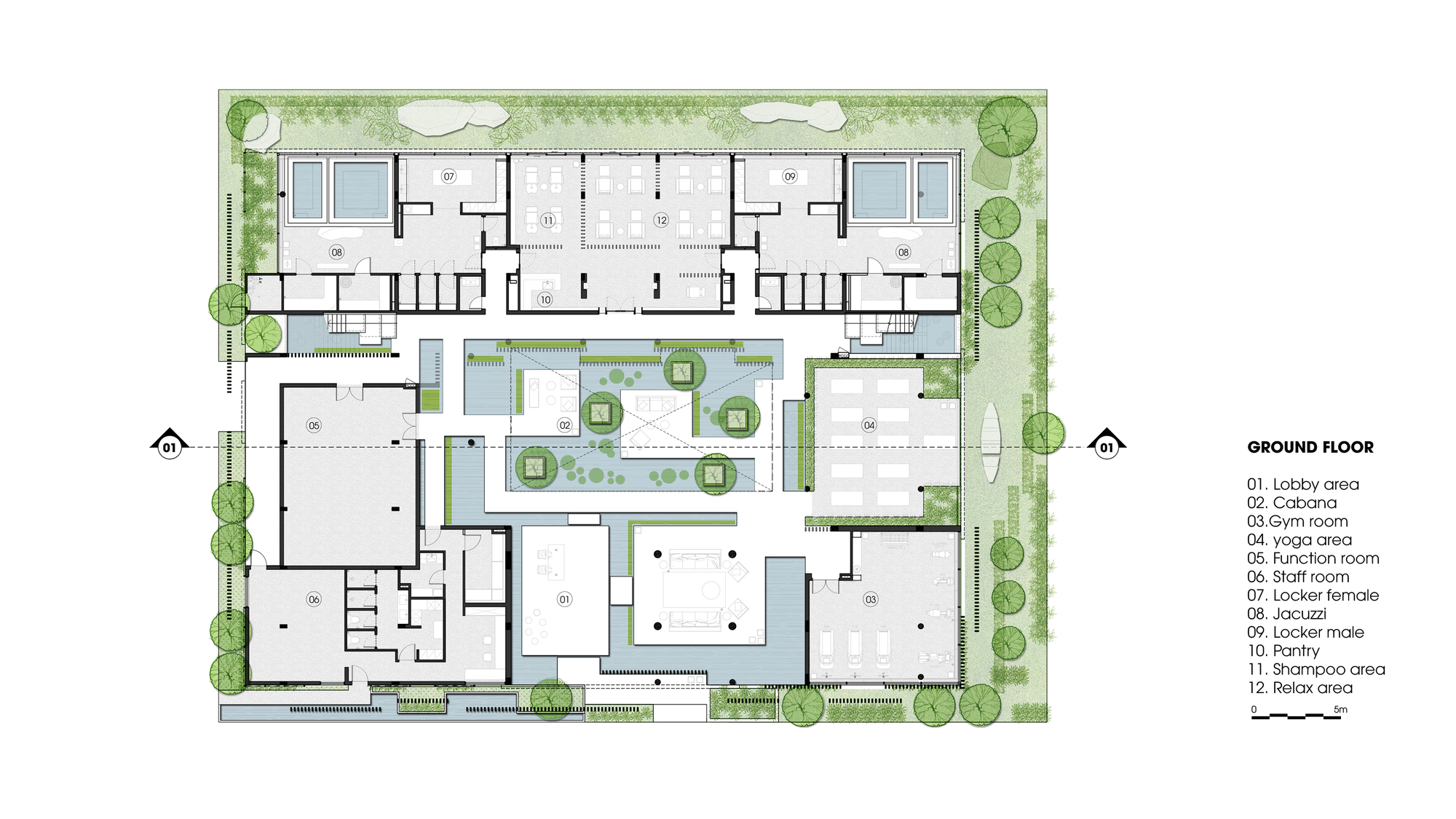
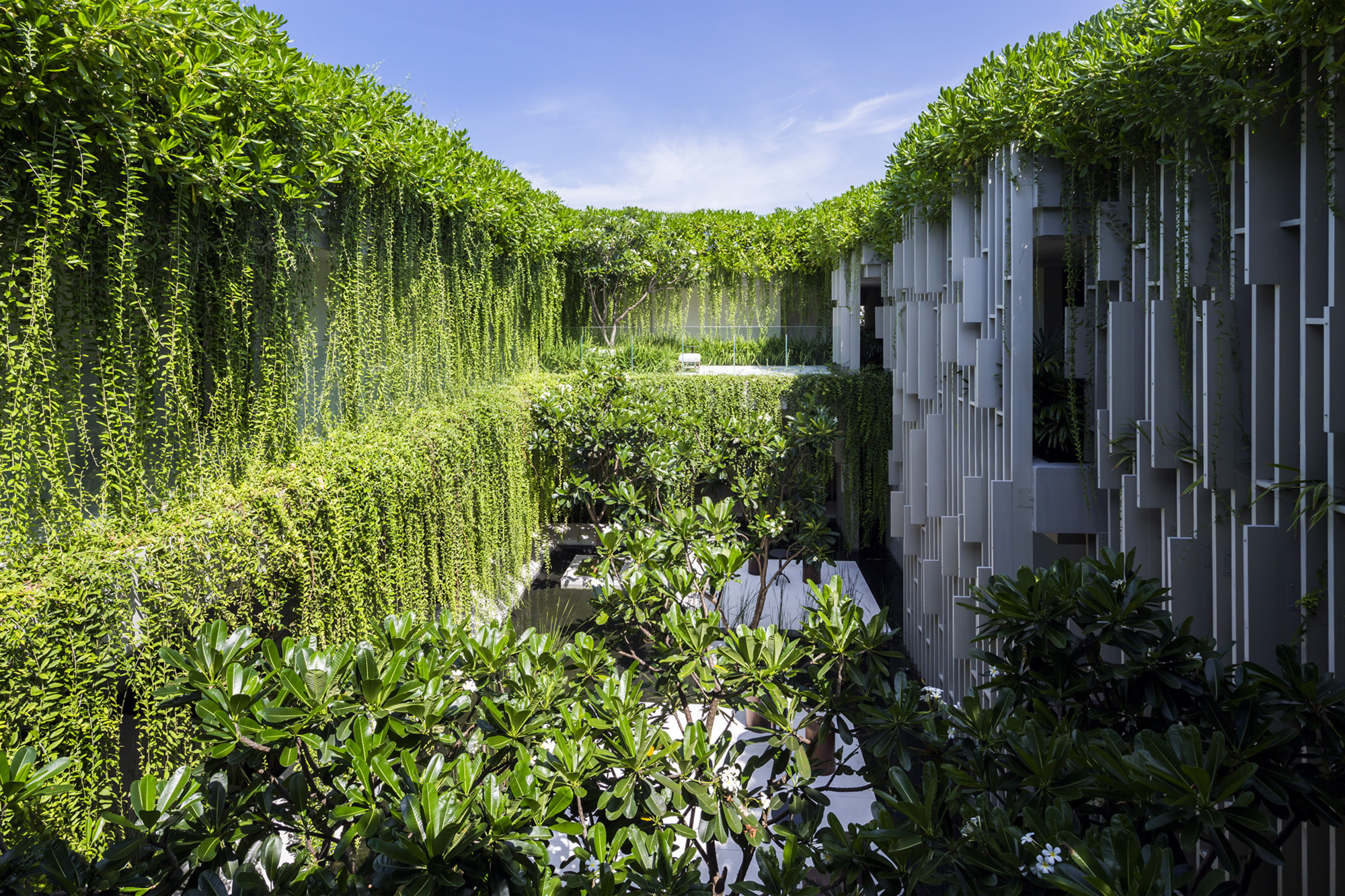 As seen in the floor plan drawing, the Pure Spa was designed with treatment rooms around lush open air gardens. Located in Danang, the project includes a health club with gym, meditation and yoga sessions held at the open lounge garden. The ground floor contains open spaces with relaxing platforms surrounded by lotus ponds and hanging gardens. With use of local plants, each retreat becomes a healing environment where the guest can enjoy wellness in privacy. Different areas flow smoothly into each other and the facade is composed by lattice patterns alternated with vertical landscapes that filter the strong tropical sunlight.
As seen in the floor plan drawing, the Pure Spa was designed with treatment rooms around lush open air gardens. Located in Danang, the project includes a health club with gym, meditation and yoga sessions held at the open lounge garden. The ground floor contains open spaces with relaxing platforms surrounded by lotus ponds and hanging gardens. With use of local plants, each retreat becomes a healing environment where the guest can enjoy wellness in privacy. Different areas flow smoothly into each other and the facade is composed by lattice patterns alternated with vertical landscapes that filter the strong tropical sunlight.
Bao’an Terrace and Pavilion
By MOZHAO ARCHITECTS, Shenzhen, China

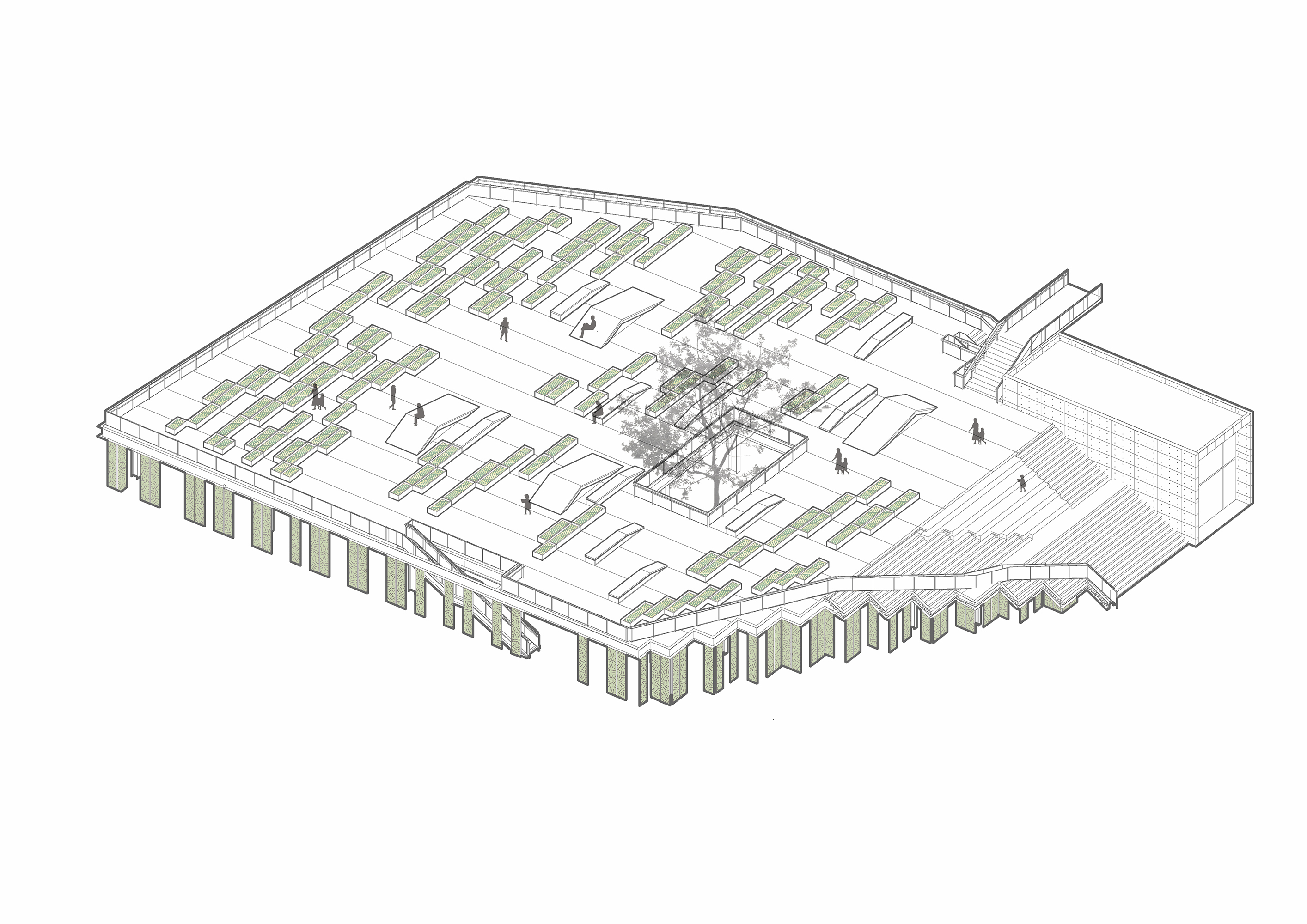
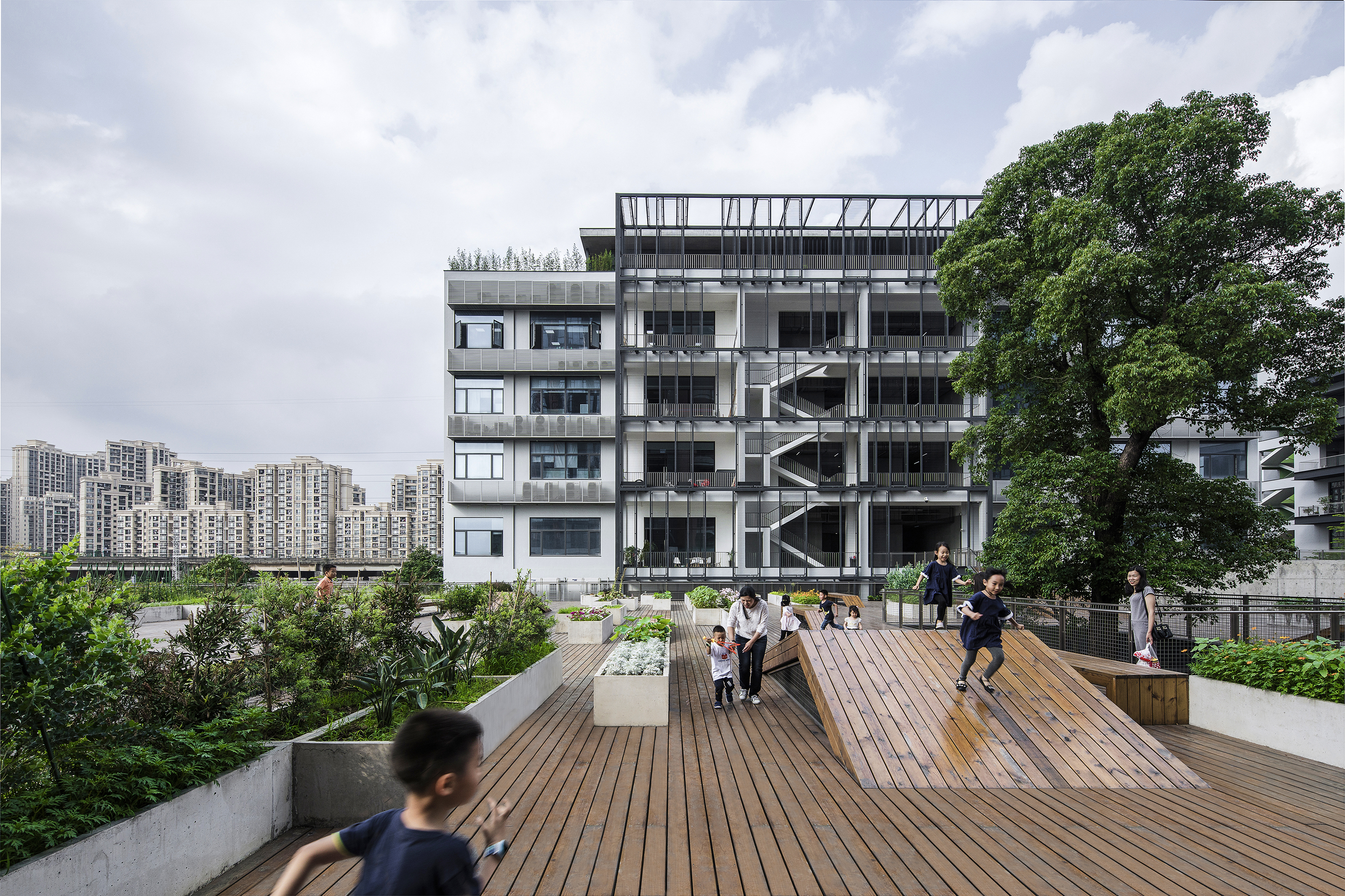 Taking advantage of geography, this project aimed to provide a dynamic public space for workers, residents, teachers, students and plant lovers in Shenzhen. In the original site layout, there is an outdoor parking lot in the west next to the courtyard. In order to meet the demand for parking, and to improve the spatial quality of the courtyard, a large landscaped terrace was created which covers the parking lot. Connected by the steps, this large terrace becomes the extension of the courtyard, with which the courtyard establishes the public space system of different levels, and the steps provide seats for an audience when outdoor activities are held in the courtyard.
Taking advantage of geography, this project aimed to provide a dynamic public space for workers, residents, teachers, students and plant lovers in Shenzhen. In the original site layout, there is an outdoor parking lot in the west next to the courtyard. In order to meet the demand for parking, and to improve the spatial quality of the courtyard, a large landscaped terrace was created which covers the parking lot. Connected by the steps, this large terrace becomes the extension of the courtyard, with which the courtyard establishes the public space system of different levels, and the steps provide seats for an audience when outdoor activities are held in the courtyard.
150 CHARLES STREET
By COOKFOX Architects, New York, NY
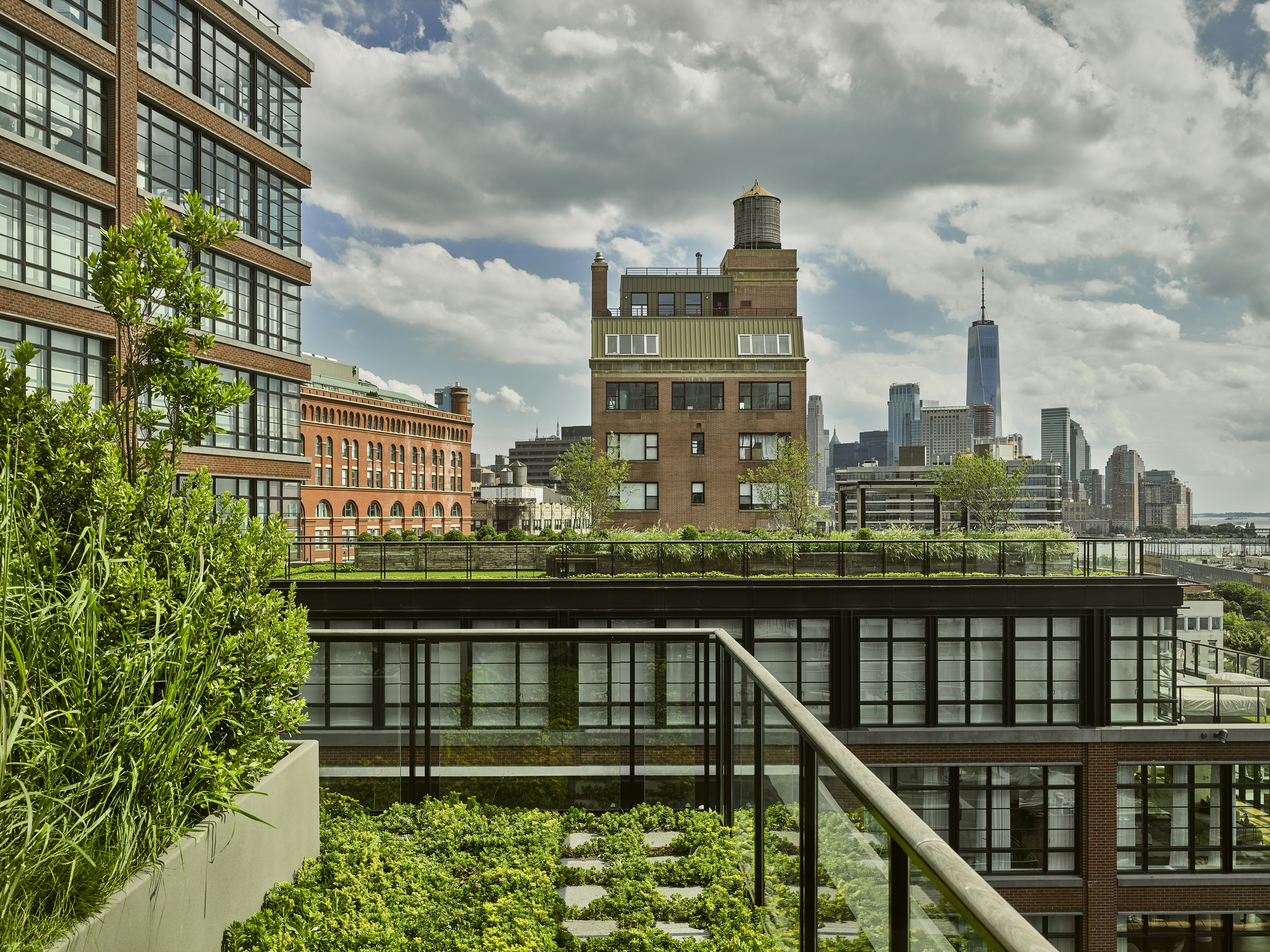
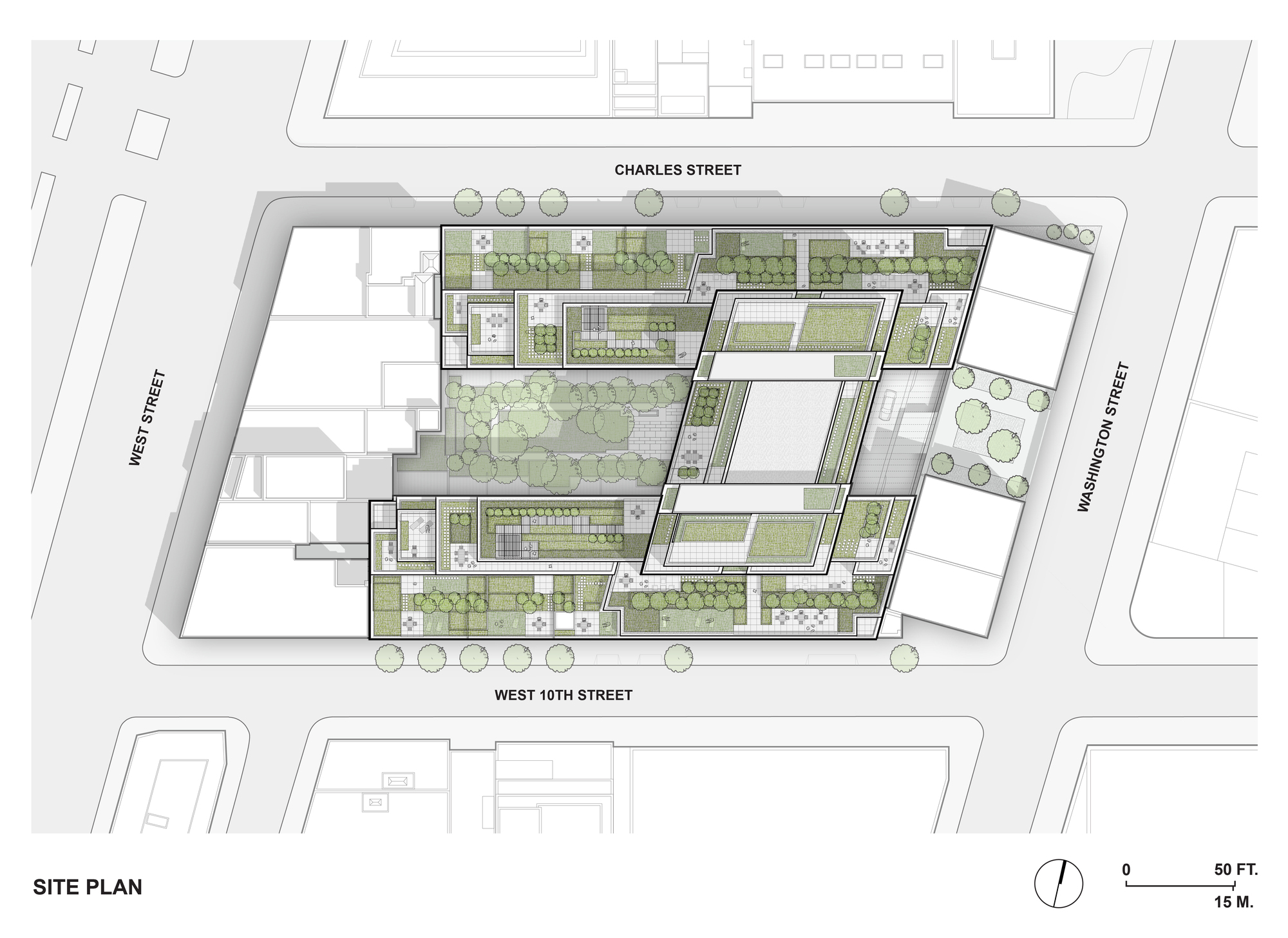
 This project by COOKFOX overlooks the waterfront, sited between the activity on the Hudson River and the history of the West Village. As shown in the site plan, the project takes advantage of both the ground level and roof terraces for plantings. The building incorporates the abandoned Whitehall warehouse, a massive, utilitarian structure of concrete, brick, and glass. The grid of the warehouse is maintained in the new building, with each bay defining separate townhomes on Charles and West 10th Streets. It has over 30,000 square feet of landscaped space distributed throughout lush green rooftops, planted terraces and courtyards.
This project by COOKFOX overlooks the waterfront, sited between the activity on the Hudson River and the history of the West Village. As shown in the site plan, the project takes advantage of both the ground level and roof terraces for plantings. The building incorporates the abandoned Whitehall warehouse, a massive, utilitarian structure of concrete, brick, and glass. The grid of the warehouse is maintained in the new building, with each bay defining separate townhomes on Charles and West 10th Streets. It has over 30,000 square feet of landscaped space distributed throughout lush green rooftops, planted terraces and courtyards.
Solaz Los Cabos
By Sordo Madaleno, Baja California


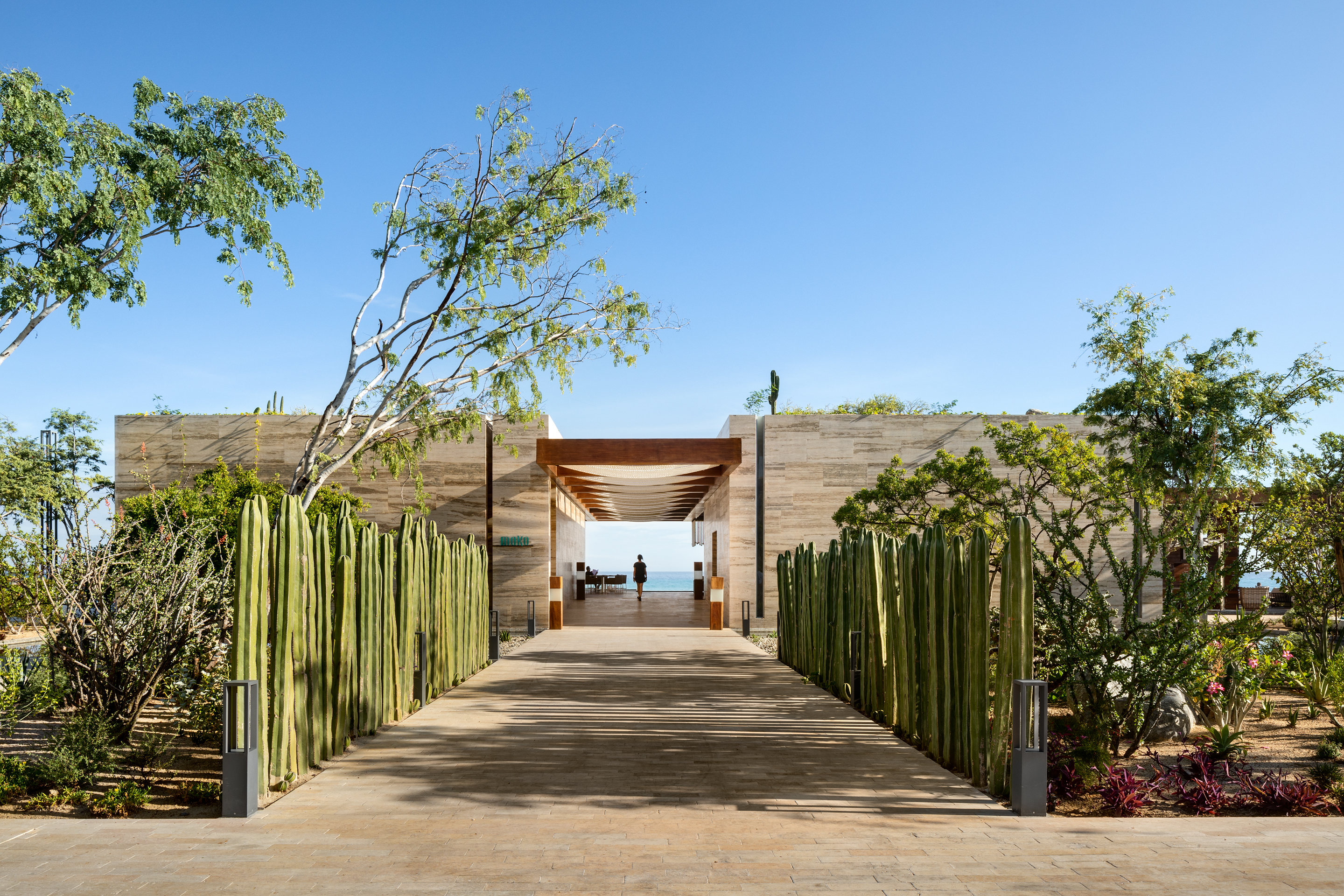 Embracing the natural surroundings of the peninsula of Baja California, this project looked to the semi-desert landscape and the Sea of Cortes. The landmark hotel integrates nature and plantings, and this is shown throughout the section drawings. The Solaz Hotel covers a total area of 9.5 hectares along a section of the coast that includes unique topographical formations, with which it is carefully integrated. The architectural concept was guided by this need for the proper integration of the construction into its surroundings, achieved through the use of organic forms that refer to the movement of the waves, producing an attractive series of volumes that are adapted to the location. The selection of materials, planting and construction methods reinforce this concept of integration.
Embracing the natural surroundings of the peninsula of Baja California, this project looked to the semi-desert landscape and the Sea of Cortes. The landmark hotel integrates nature and plantings, and this is shown throughout the section drawings. The Solaz Hotel covers a total area of 9.5 hectares along a section of the coast that includes unique topographical formations, with which it is carefully integrated. The architectural concept was guided by this need for the proper integration of the construction into its surroundings, achieved through the use of organic forms that refer to the movement of the waves, producing an attractive series of volumes that are adapted to the location. The selection of materials, planting and construction methods reinforce this concept of integration.
Perez Art Museum
By ArquitectonicaGEO and Herzog & de Meuron, Da Nang, Vietnam

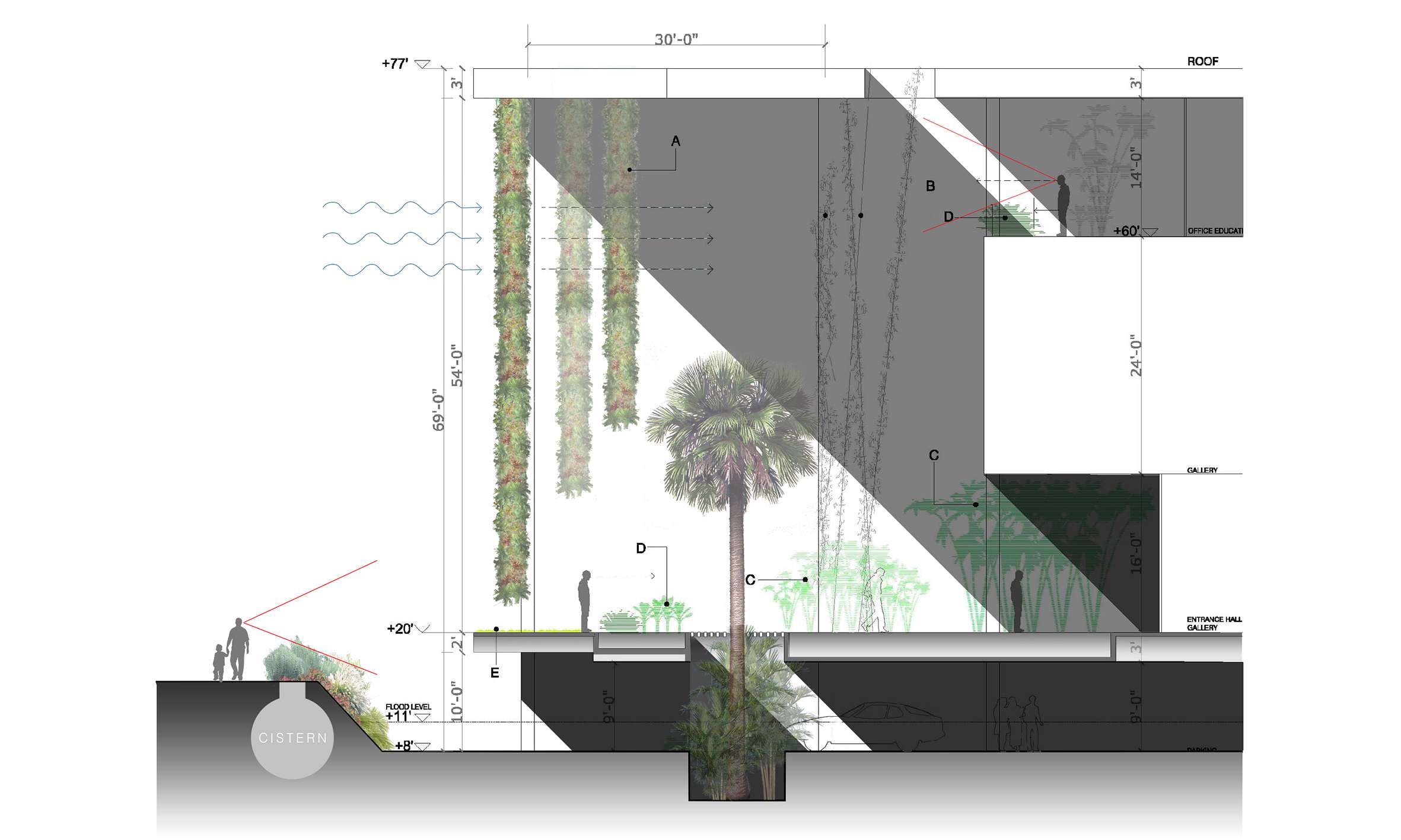

Really zooming in to give a detailed understanding, the section drawing for the new PAMM building showcases the integration between plantings and architecture. Native plants were chosen by ArquitectonicaGEO to display the raw materials of the landscape as complement and contrast to the geometric architecture of the building. Native trees, shrubs, groundcovers and vines spring from the ground plane in a vibrant counterpoint to more formal, hanging vertical green elements. In addition to the lush pan-tropical vegetation of South Florida, landscape materiality is deconstructed to exhibit basic forms, including gravel in paths, the parking garage, and in the urban concrete environment.
Stepping Park House
By Vo Trong Nghia Architects, Da Nang, Vietnam
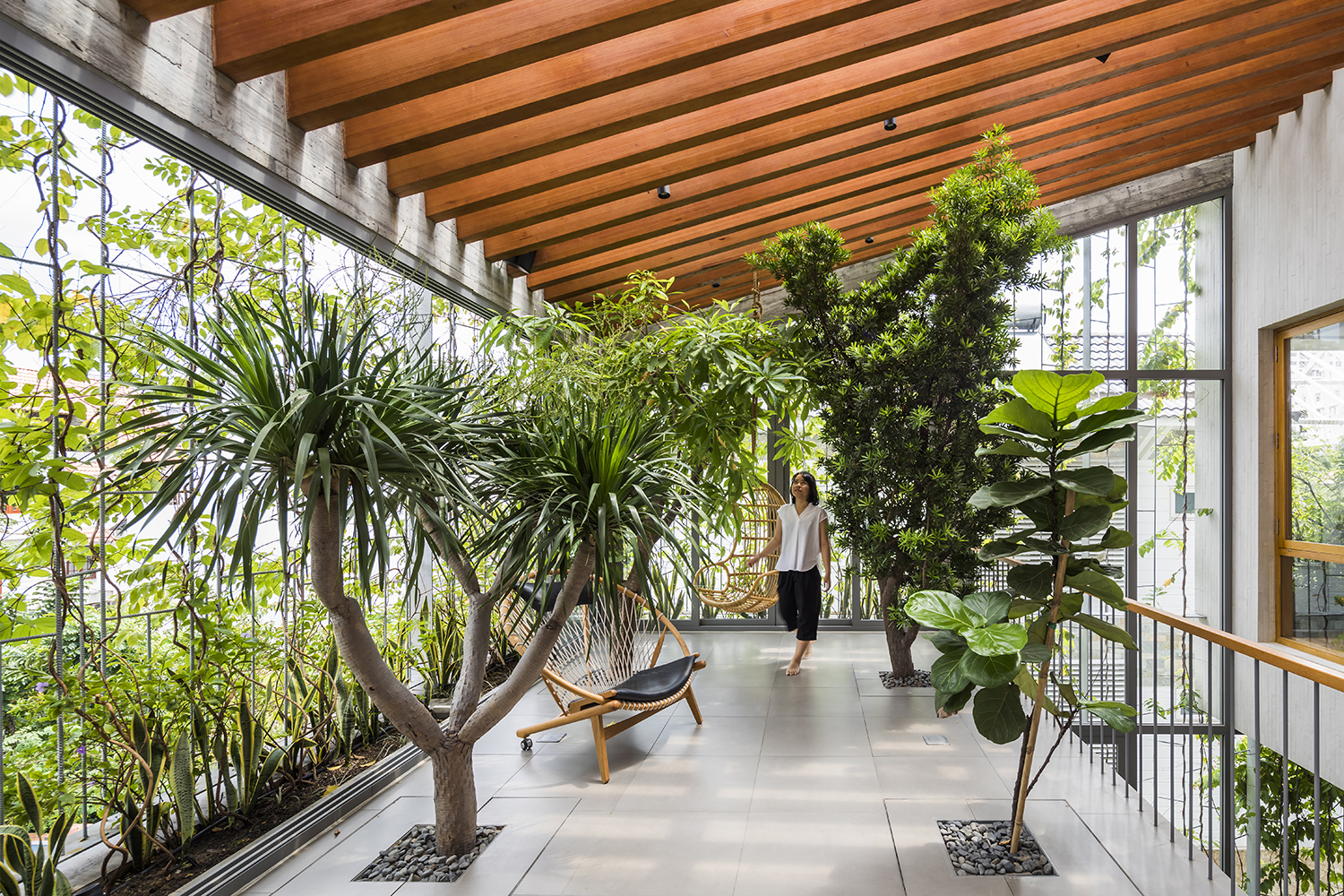
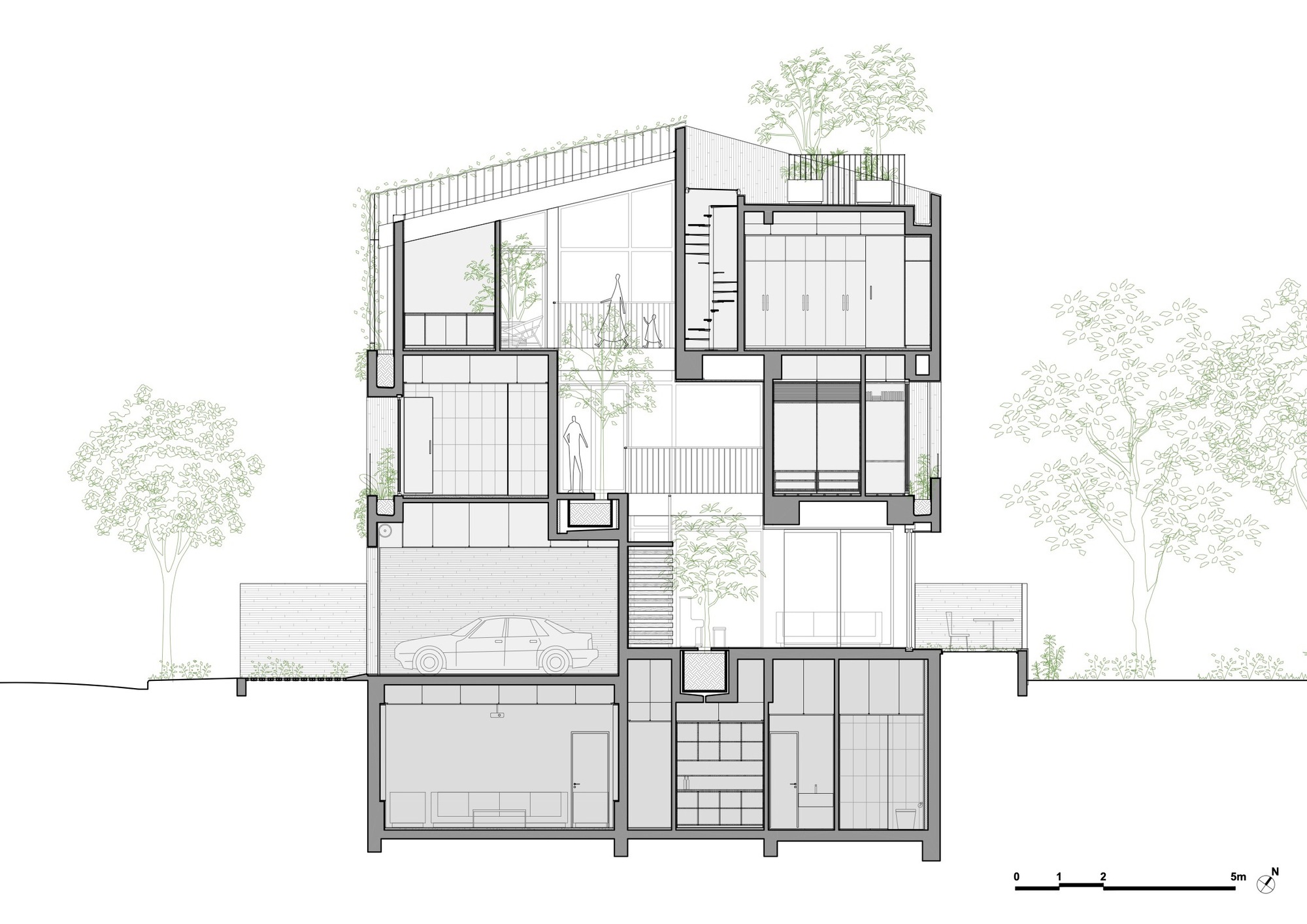
 Sited adjacent to a new residential area of Ho Chi Minh City, this project has a very rare opportunity for green space. As seen in the section drawing, the team focused on designing a house which works as a gradual transition of greenery from the outside to inside. Projected on the cross section, a large void was created by cutting the volume throughout the three floors. The void on ground floor serves as living room, opening to the park, while on the top as family room filled with greenery. The void incorporates both circulation and natural elements like plants and trees, providing the private rooms with additional natural light and a feeling of continuity of the park to all three floors of the building.
Sited adjacent to a new residential area of Ho Chi Minh City, this project has a very rare opportunity for green space. As seen in the section drawing, the team focused on designing a house which works as a gradual transition of greenery from the outside to inside. Projected on the cross section, a large void was created by cutting the volume throughout the three floors. The void on ground floor serves as living room, opening to the park, while on the top as family room filled with greenery. The void incorporates both circulation and natural elements like plants and trees, providing the private rooms with additional natural light and a feeling of continuity of the park to all three floors of the building.
Architizer is thrilled to reveal the 12th Annual A+Awards Finalists. See which projects and firms made the cut and have your say in who wins a coveted Popular Choice A+Award. Cast your vote today >






 150 CHARLES STREET
150 CHARLES STREET  Naman Pure Spa
Naman Pure Spa  Perez Art Museum Miami
Perez Art Museum Miami  Solaz Los Cabos
Solaz Los Cabos  Stepping Park House
Stepping Park House  The planting terrace and the experience pavilion
The planting terrace and the experience pavilion 


